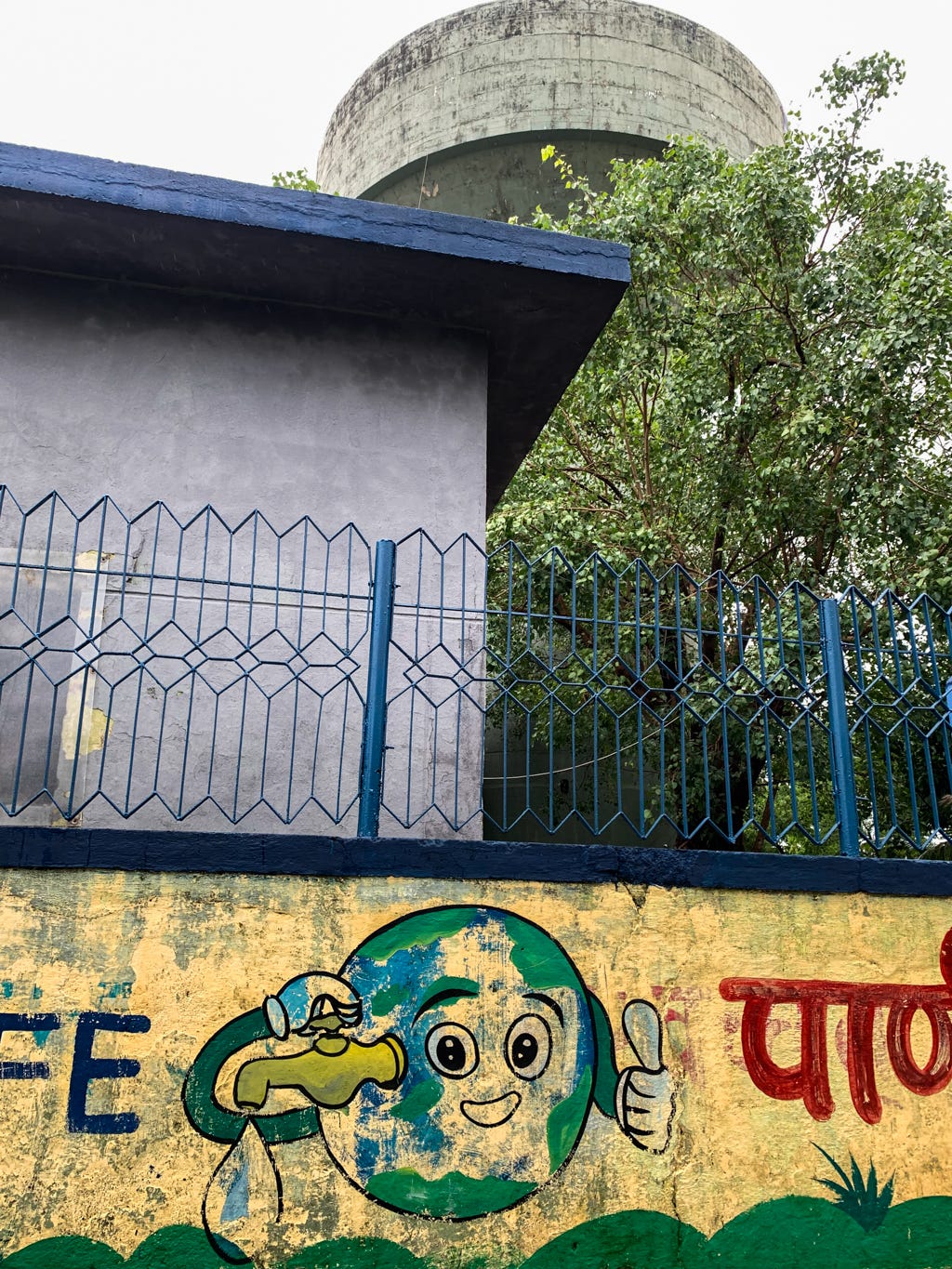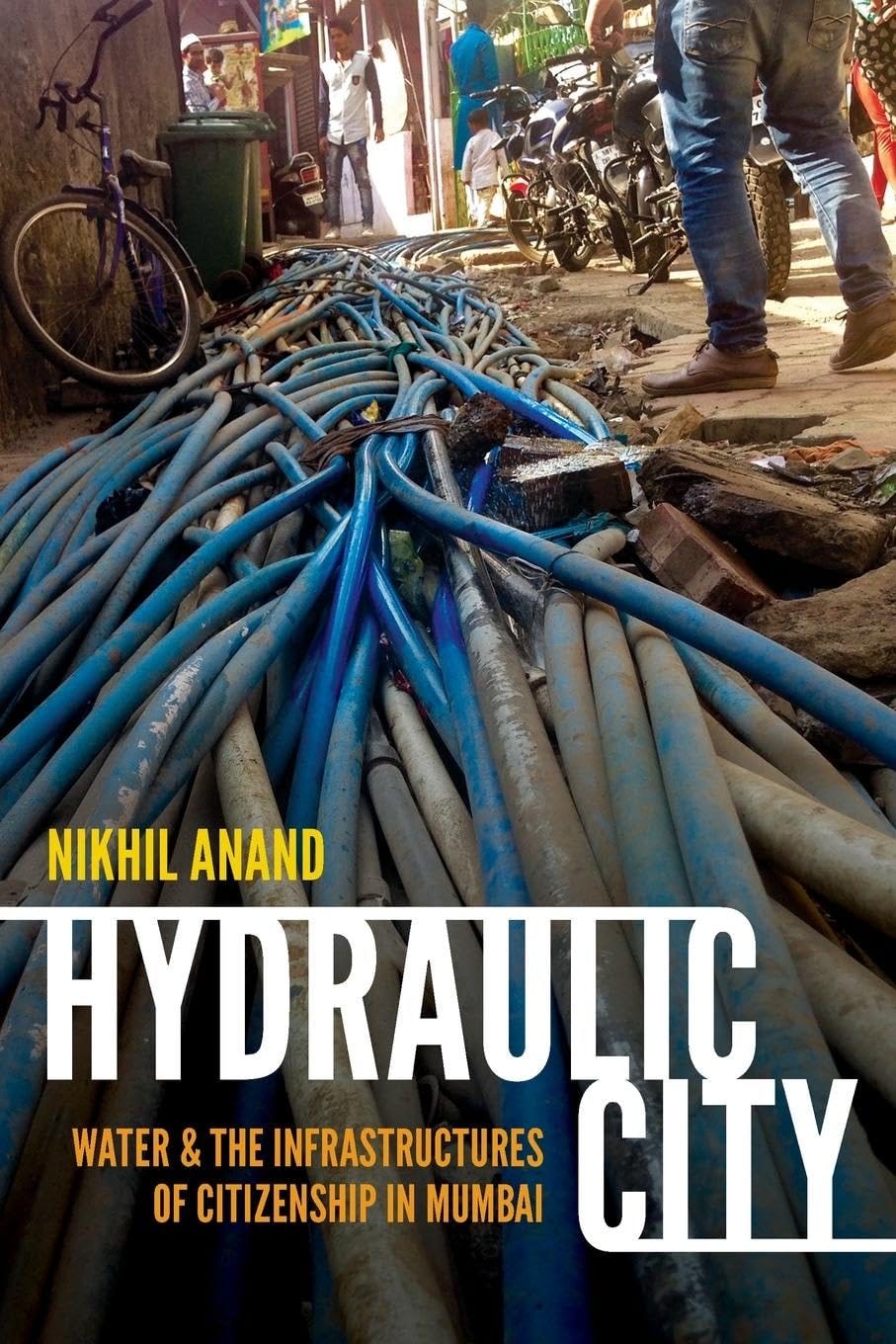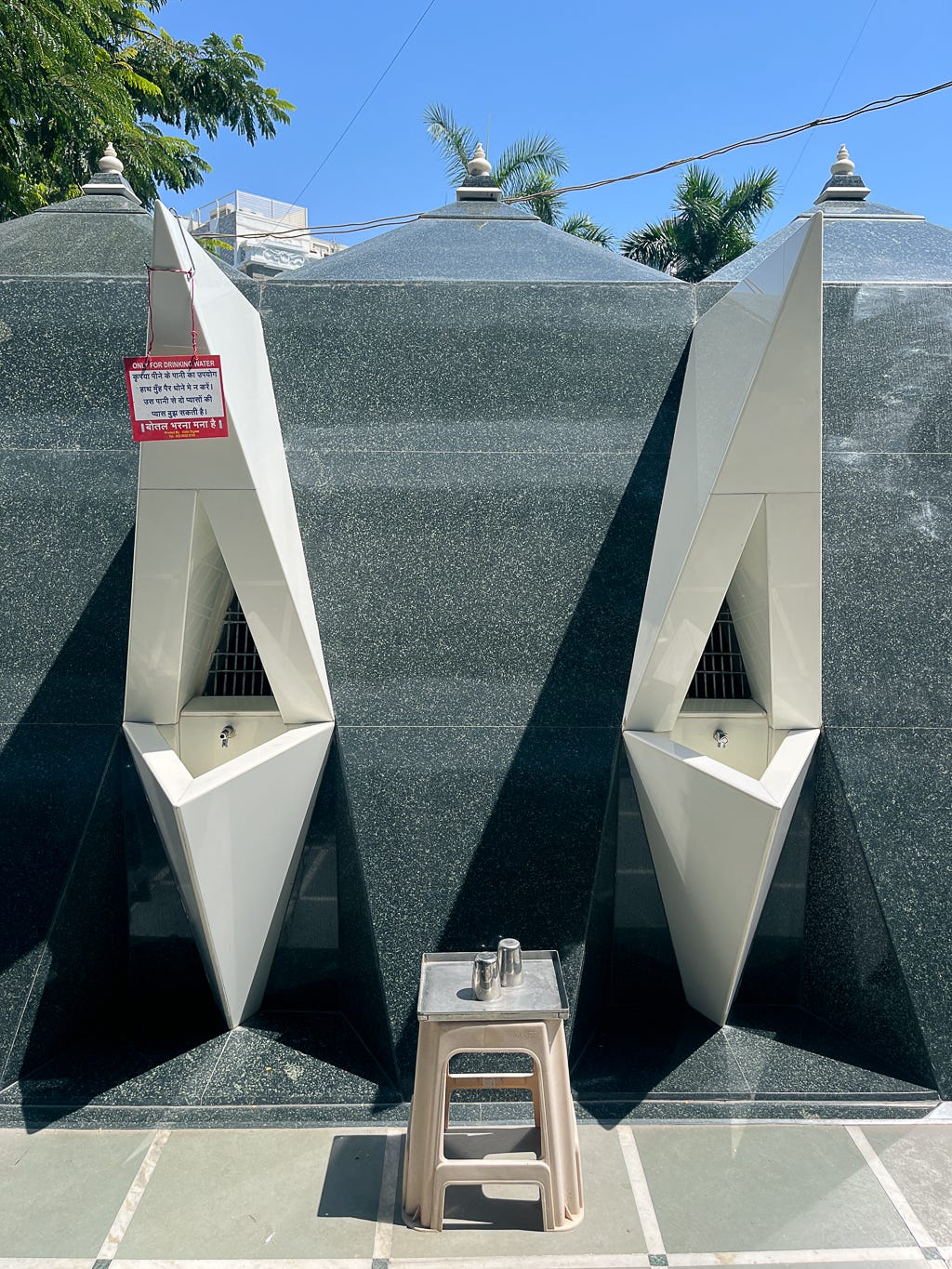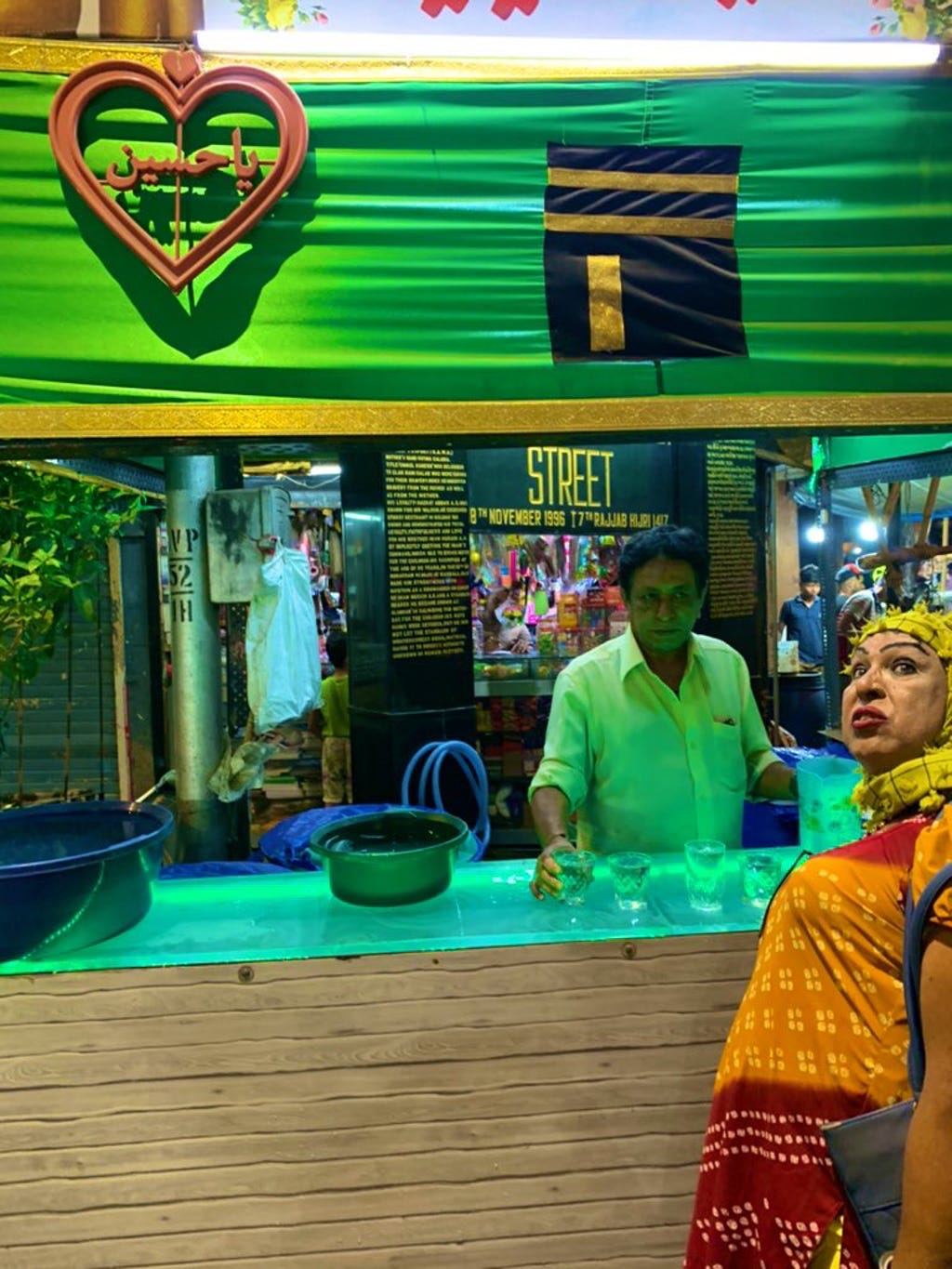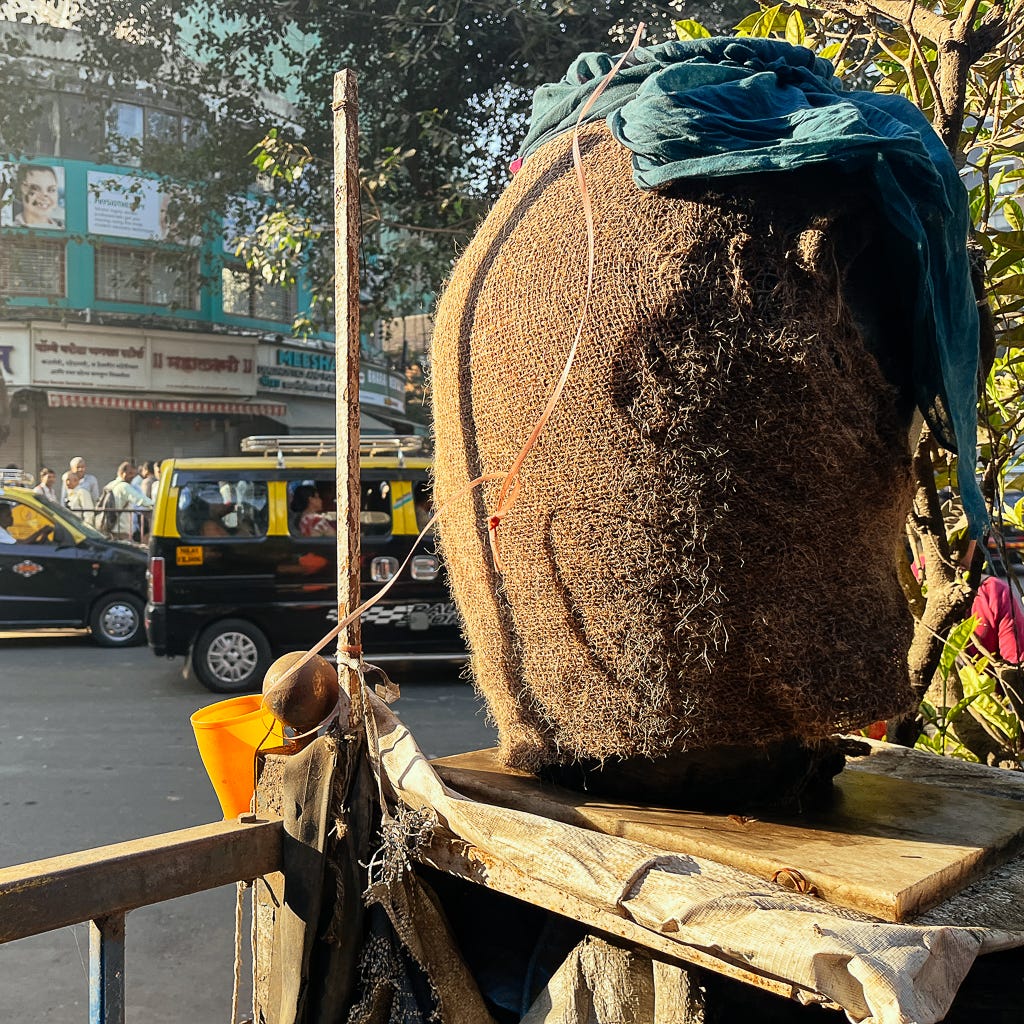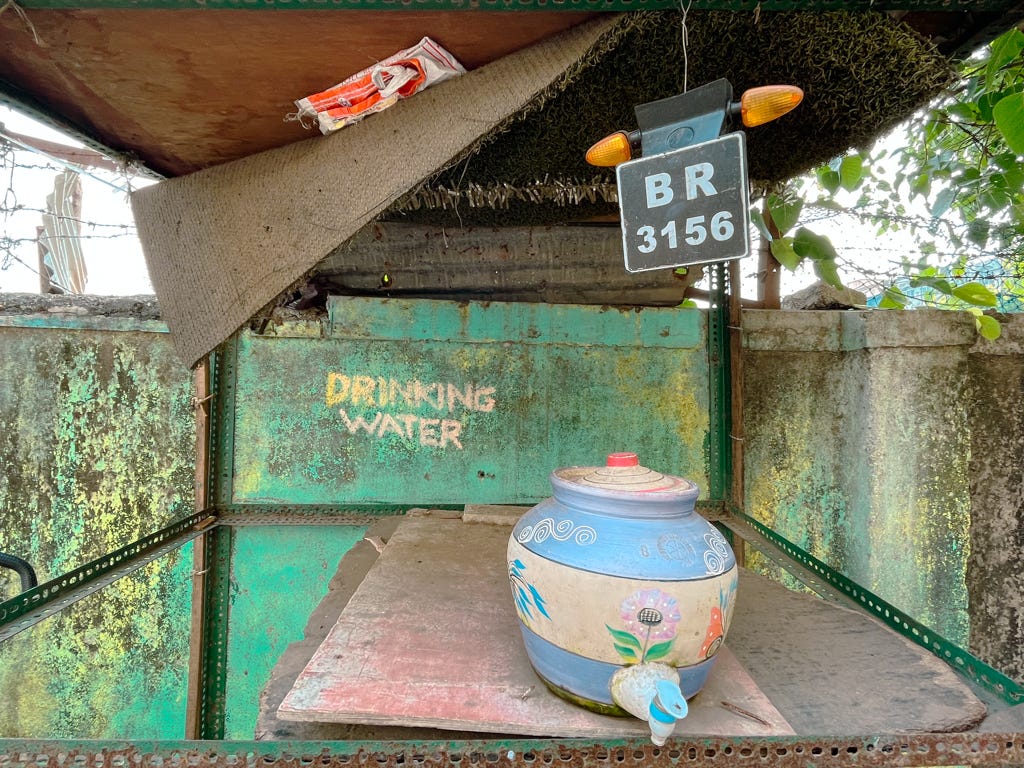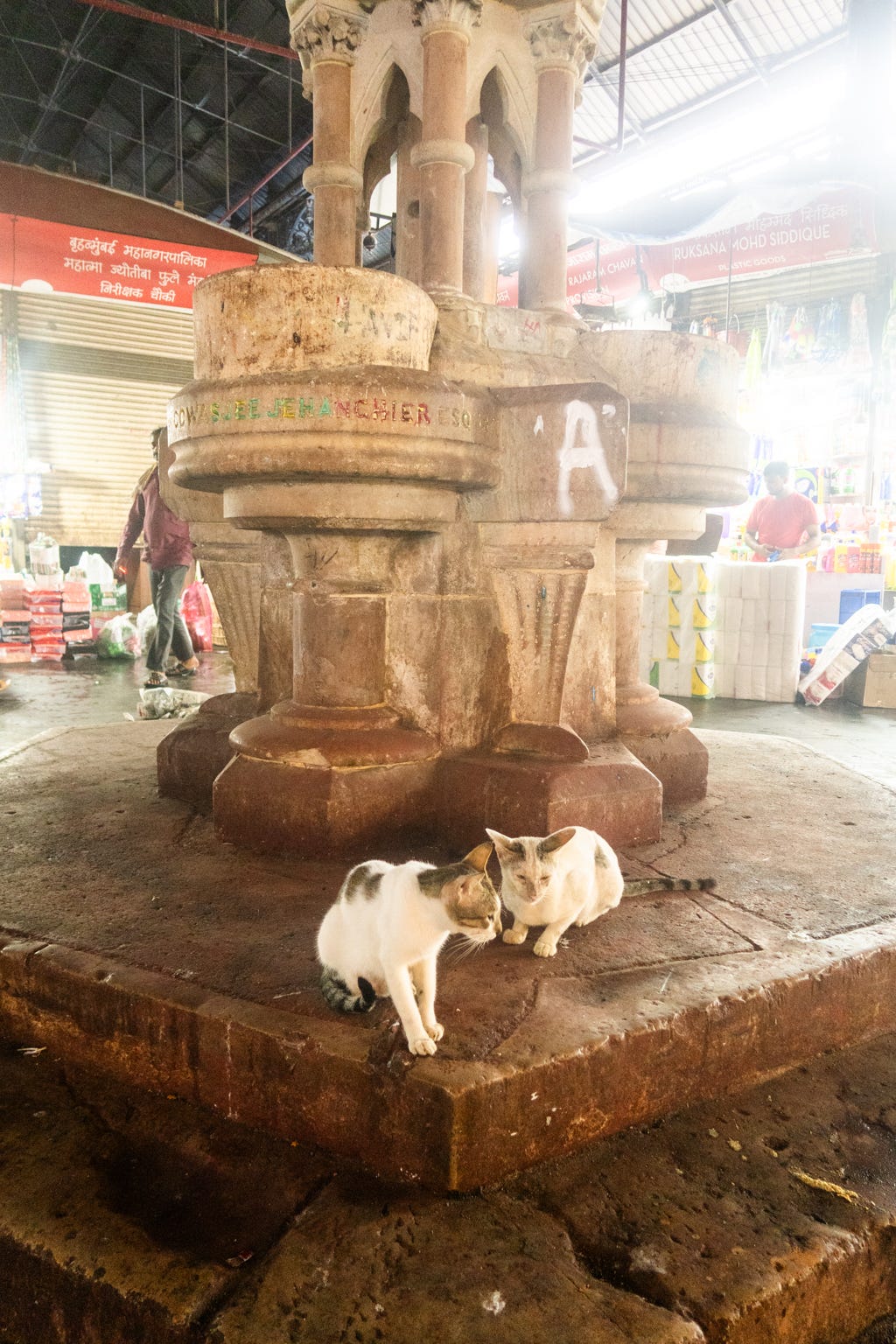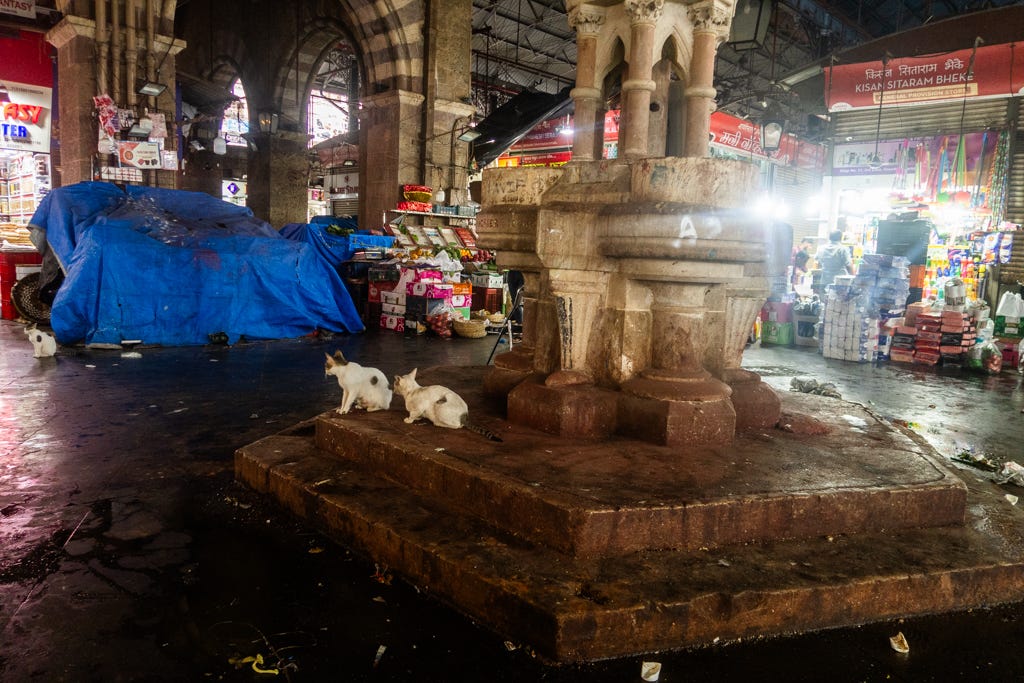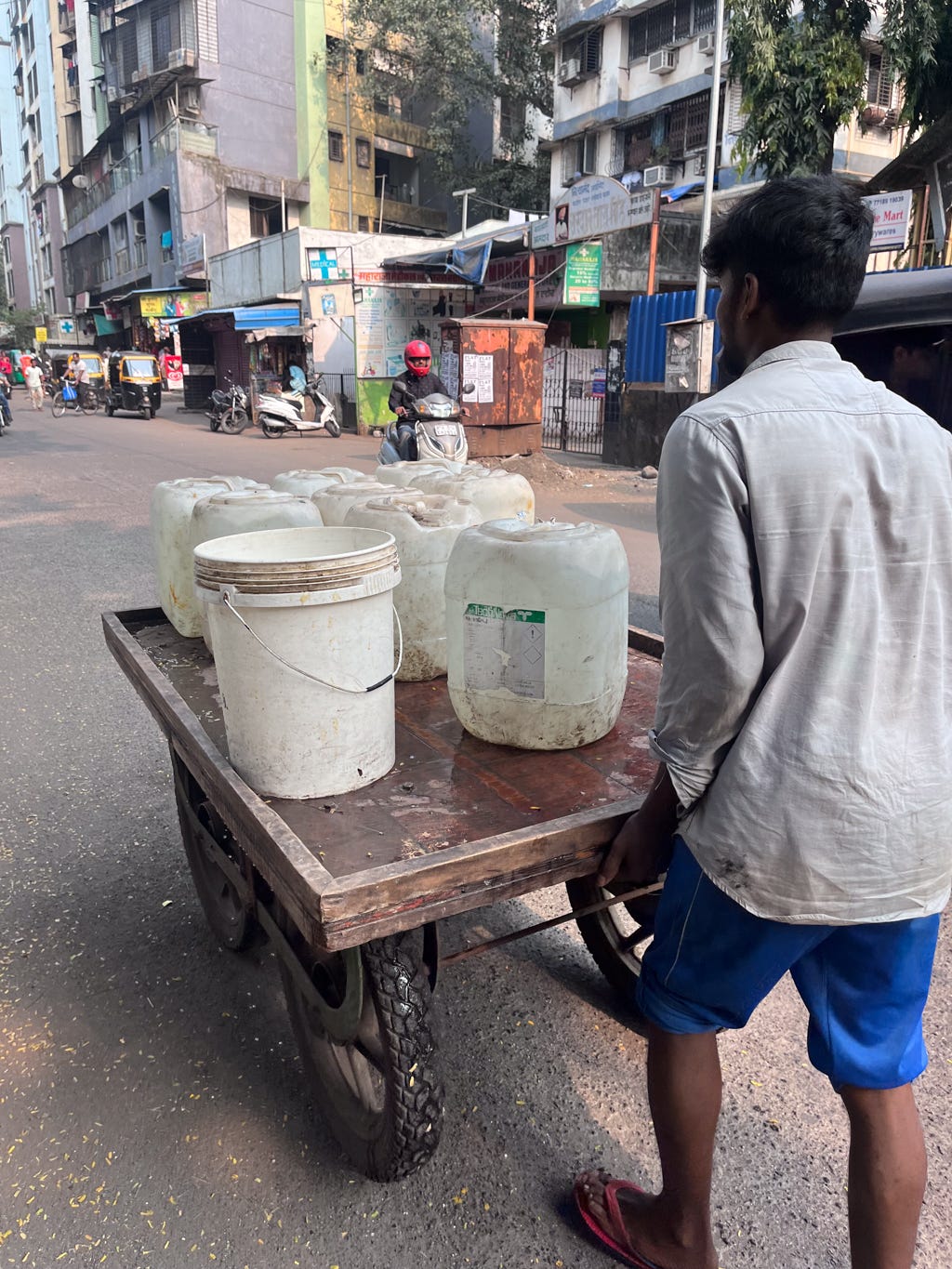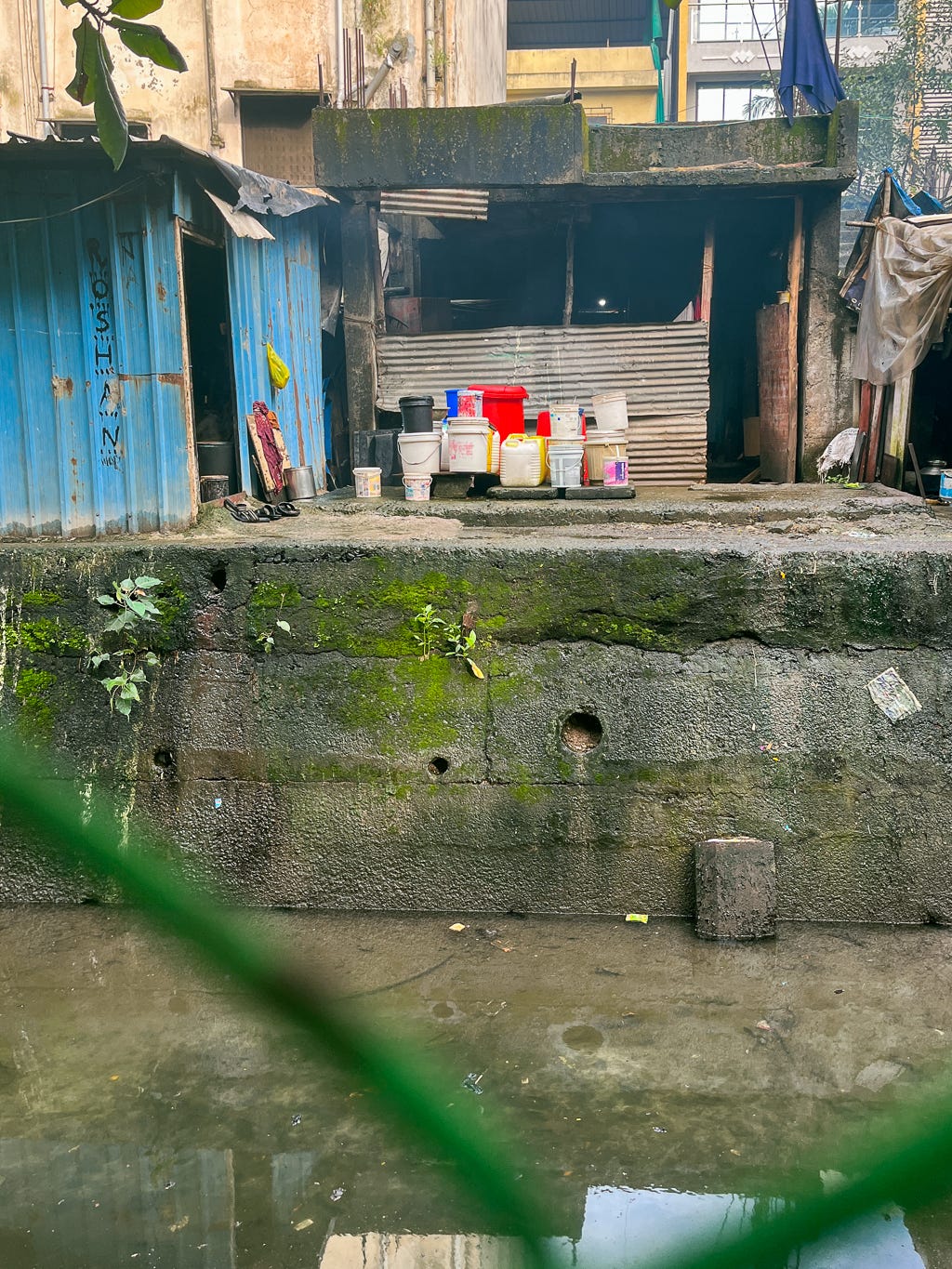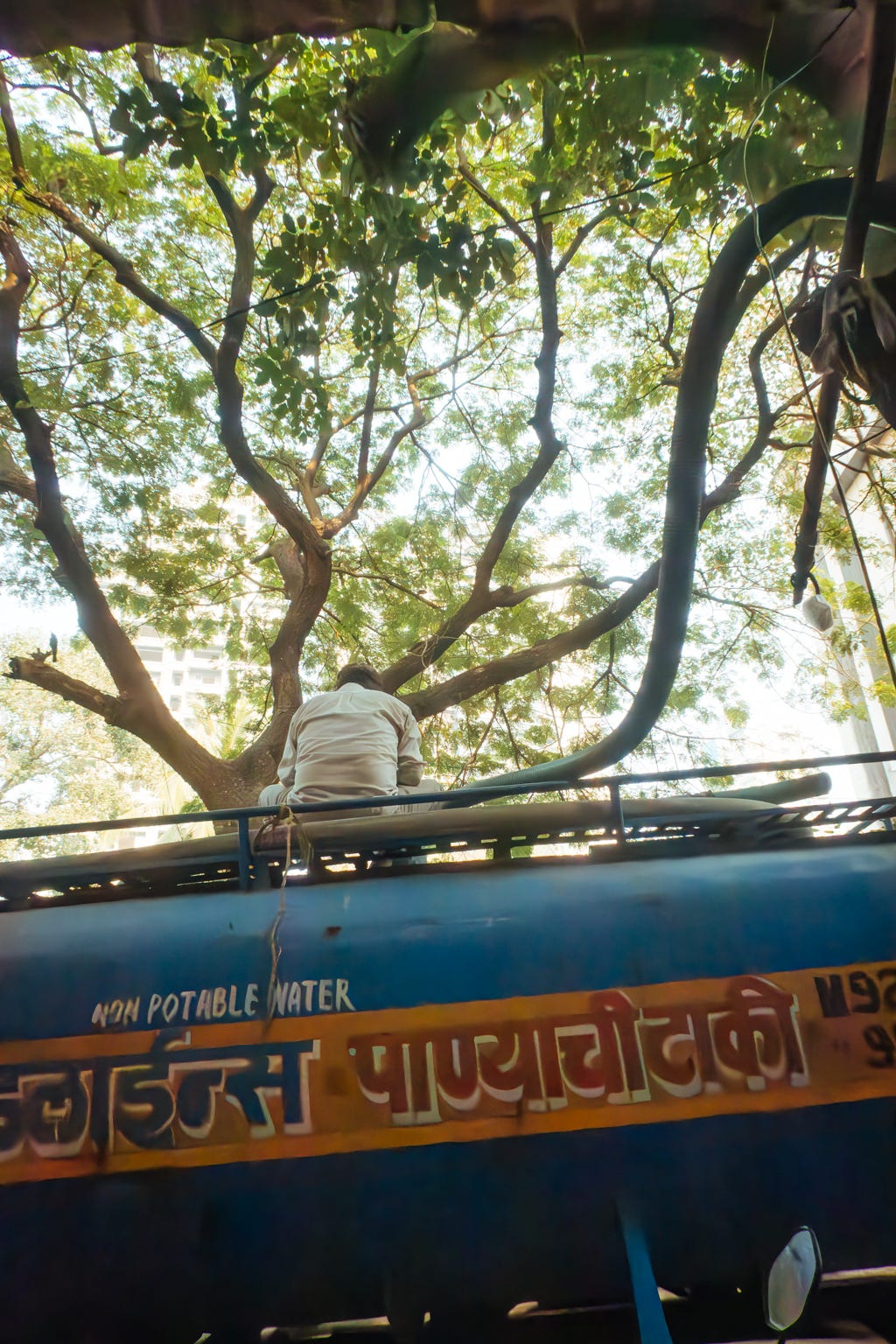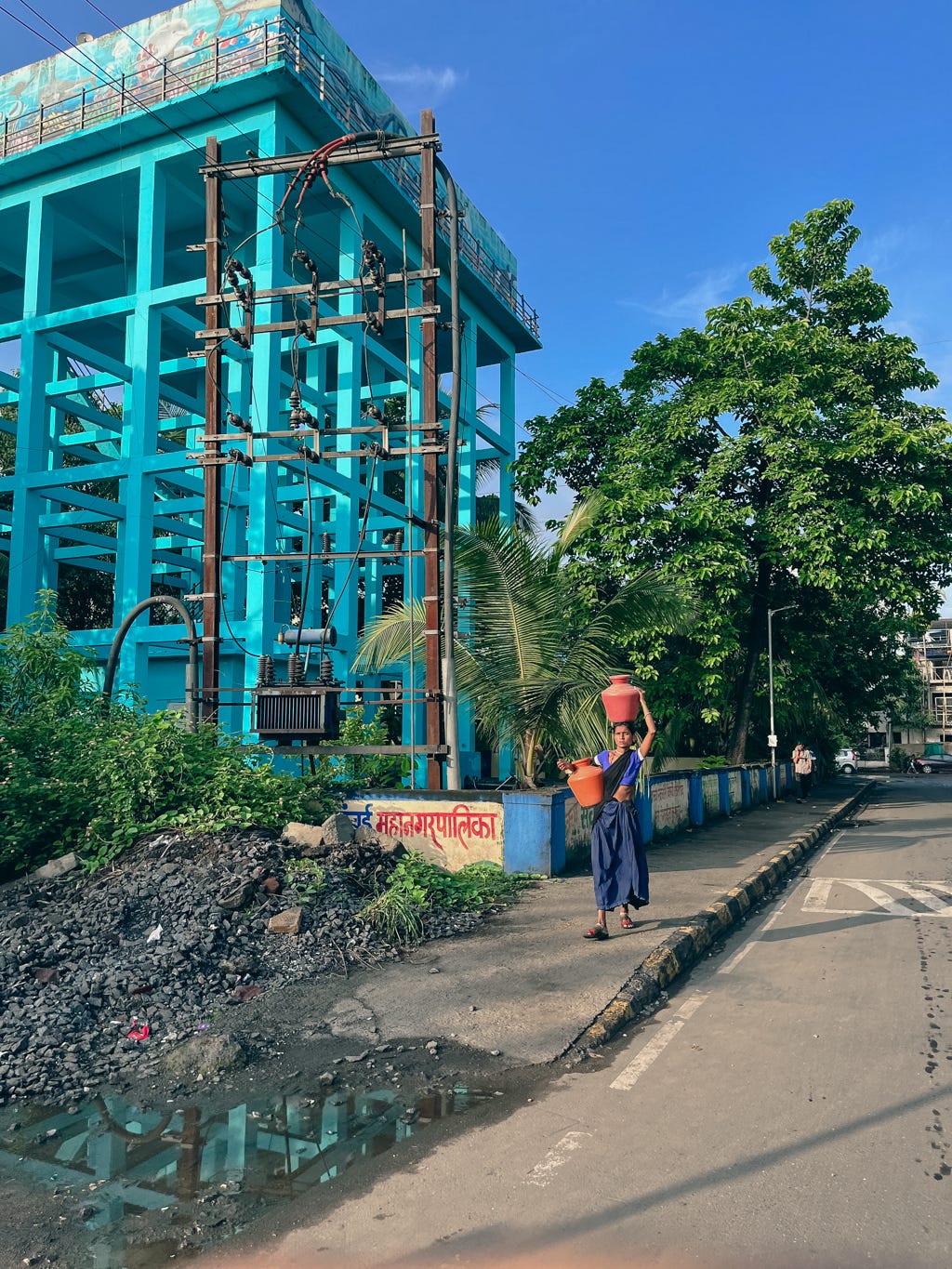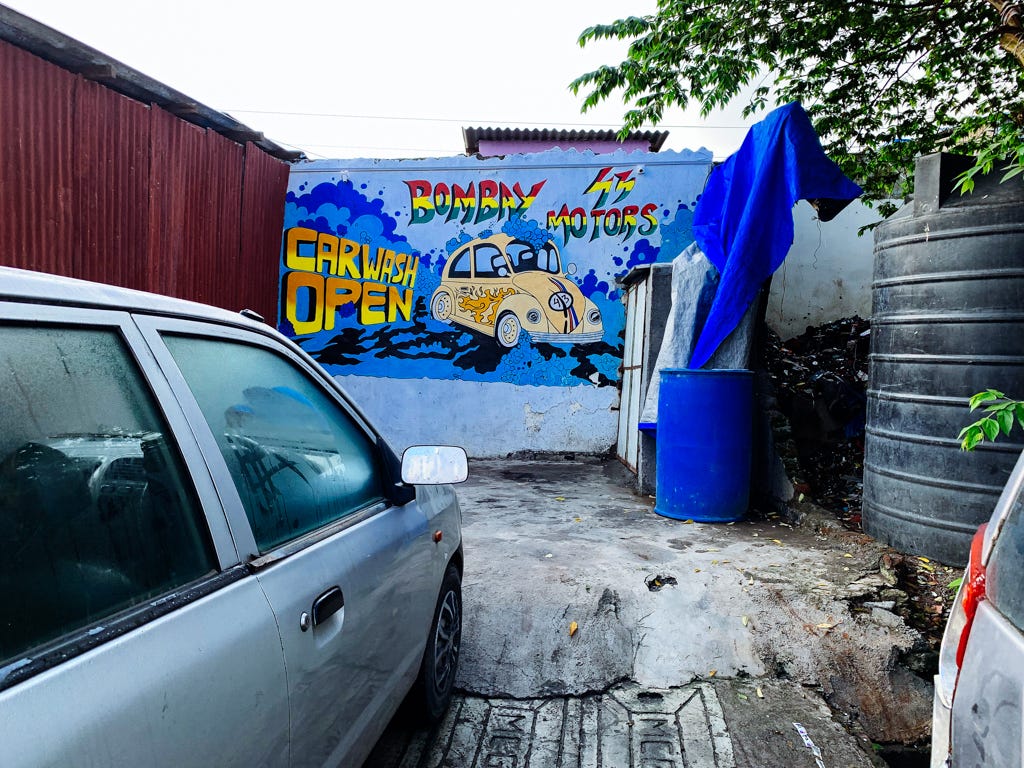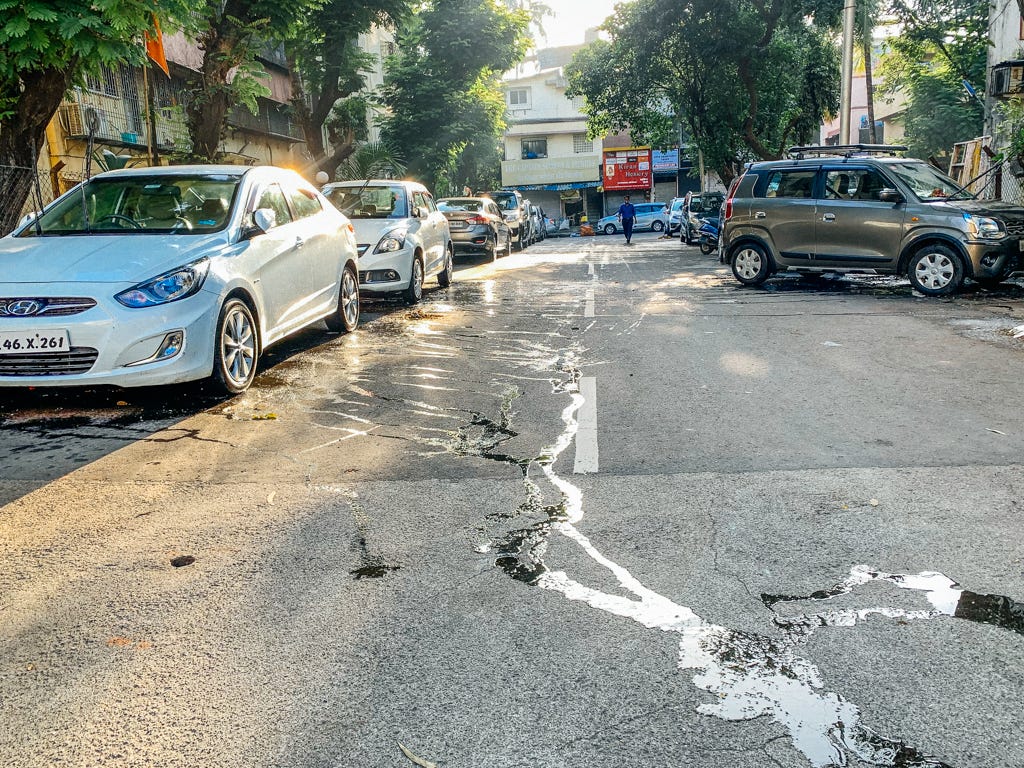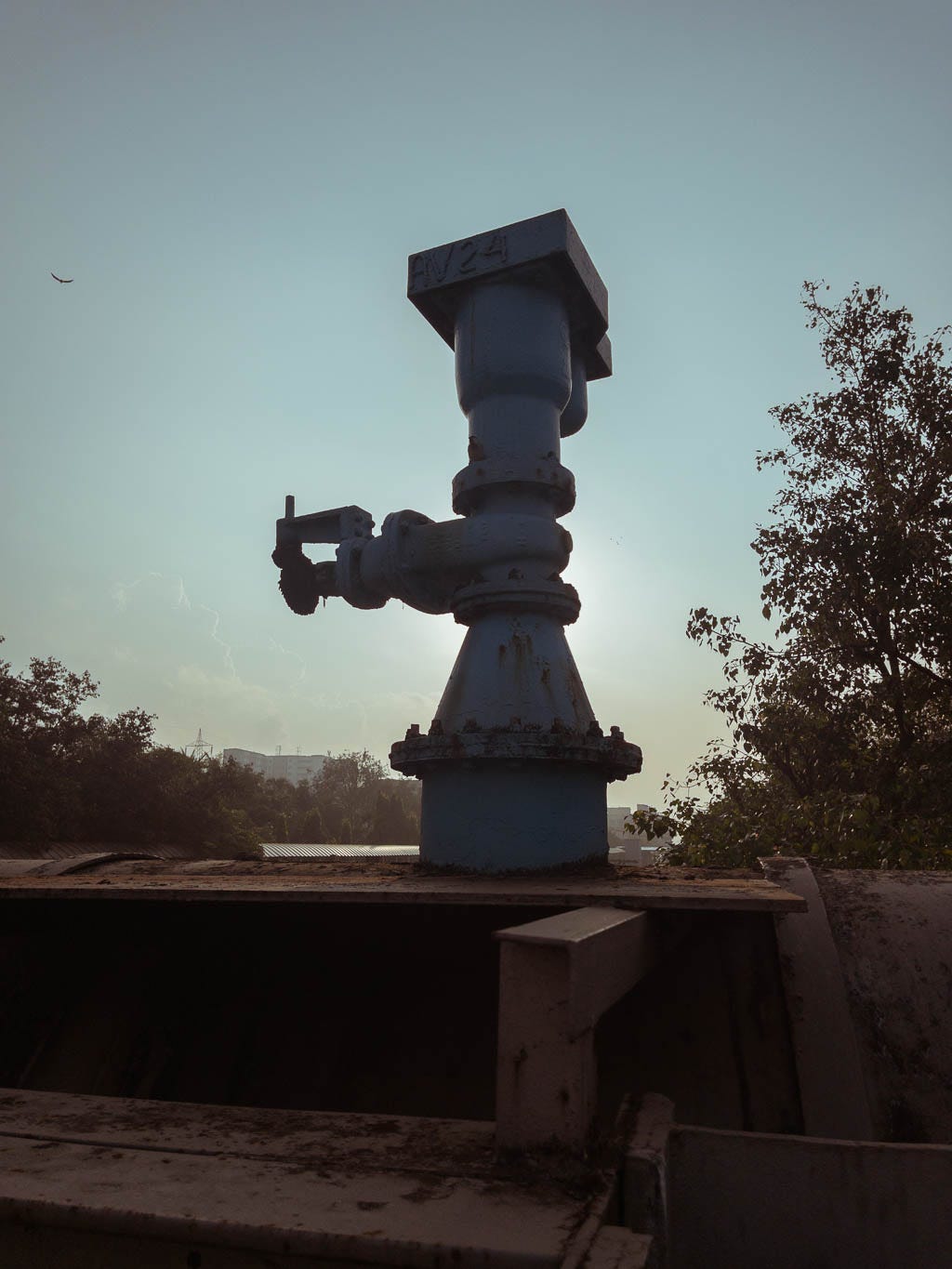If you come from a place deficient in water, you are automatically tuned to thinking about where the water you drink or use comes from, wherever you go. I am originally from Bangalore, a city that saw riots over water in my growing years, and for many of us from there, the water we use and how we use it is something we are acutely aware of.
I live in Mumbai now, where, relative to a city like Bangalore, it is water-secure thanks to the abundant monsoon, but only on the surface. If you look around, with or without a camera, you will see that each drop has to fight to reach most people in the city.
The best book to read to understand Mumbai's water politics is Nikhil Anand’s Hydraulic City: Water and the Infrastructures of Citizenship in Mumbai.
However, when I walk around Mumbai, I look around for moments or things about how we use water and over a while, it has helped me understand the daily flow of water in the city and how it merges with life. Here are a few images to show you what I mean.
In Western India, providing free drinking water to people is considered one of the most generous things one can do for others. It is also the symbol of one of our local banks.
The older parts of the city have these elaborate fountains that provided water to both people and animals.
For most Mumbaikars (People of Mumbai/Bombay), water does not come when you turn on a tap. It flows through other means.
And then, there’s water that is used for other things.



